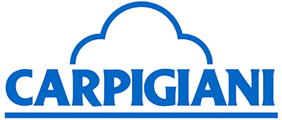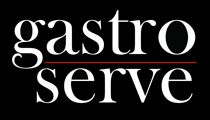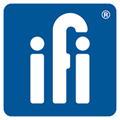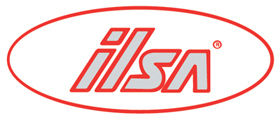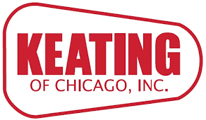How Henny Penny SmartHold Brings Value to the Kitchen
SmartHold Proofing & Holding
July 1, 2020Why Holding Equipment is Vital to the “New Normal” in Foodservice
July 31, 2020
Henny Penny SmartHold Heated Holding Cabinets feature precise automatic humidity control. This gives operators the ability to hold nearly any hot food item longer and with significantly improved food value than any other heated holding cabinet. A patented system lets the user:
Hold at any humidity level between 10% and 90% relative humidity, and at any temperature from 80°F (27-°C) to 210°F (99°C).
Select or adjust humidity level in one percent increments.
Generate and maintain the precise desired level throughout the holding cycle automatically.
Proof and hold in the same piece of equipment (yes, you read that right).
This level of control is achieved by the capability to also remove humidity automatically through a sensor controlled venting system, a feature quite rare among holding cabinets. Sensor feedback control also does a much better job than conventional thermostats of maintaining precise temperatures throughout the cabinet. One major advantage that emerges is the ability to hold at temperatures under 150°F (65°C). This is the “proofing mode” that allows the SmartHold cabinets to proof bread and other bakery items.
Why Upgrade to SmartHold?
The most basic function of insulated heated holding cabinets is keeping cooked foods at specific internal temperatures prior to serving. At the end of the day, holding equipment should be doing much more than simply maintaining constant heat. Without controlled humidity, a heated environment will quickly cause fresh product to become dry and unappetizing. Food loses value when it must be thrown away instead of served. Humidity in basic thermostat-controlled holding cabinets comes from the heated product itself. However, maintaining food value for longer periods requires some semblance of control over the amount of humidity in the cabinet at any given time.
Relative humidity inside a holding cabinet can vary a great deal, depending on the type and quantity of food being held, how it was cooked, how long it has been held and how often new products are added into the cabinet and how often the doors are opened and closed. Most “dry” heated holding cabinets have a manual slide vent that allows moist air to escape when humidity builds to an undesired level. “Humidified” models also have water pans—particularly those that use fans to circulate heat—offering a passive means of adding humidity though evaporation. This combination of evaporation, moving air and external venting is intended to maintain some degree of humidity control in the holding environment.
For limited menu applications or operations that simply don’t require holding times much beyond an hour, this level of technology is all that’s needed. Obtaining the benefits of longer holding times requires the ability to measure and maintain the relative humidity inside the holding environment in a much more precise way.
Advances in holding technology incorporate humidity control sensors to monitor conditions in the cabinet. “Smart” cabinets, like our SmartHold series take control a step further by using the measurement of relative humidity to control the introduction or venting of moisture in order to maintain a desired level. (Curious about the ideal relative humidity levels for different menu items? Click here to read our blog on that.)
The SmartHold Payoff
The overwhelming advantage to precise humidity control in a holding cabinet is that foods no longer have to dry out, shrink, or turn soggy over a period of time in exchange for staying hot. Operators can create the perfect holding environment for any type of food simply by selecting the right temperature and humidity level.
Such technology isn’t particularly cheap, but well-worth the initial investment for demanding kitchens. It’s important to gauge the holding needs of your operation honestly to see if such control is worth more than it costs. On the other hand, it’s hard to overestimate the benefits this quantum leap in control has to offer over conventional hot boxes.
Here’s how SmartHold brings value and shows ROI in the form of savings:
SmartHold has the potential to hold many popular items almost indefinitely. Holding times measured in hours, rather than minutes. This extra time comes cheap in terms of labor—the programmable process is completely automated. Countdown timers also help employees keep track of holding times for individual trays of food.
The precise control of temperature and humidity means you can hold just about any item for a long time. This is a major benefit, because conventional wisdom says many items simply can’t be held for long, if at all. The gains in productivity can accrue across your entire menu.
A smart holding cabinet can provide holding and proofing capabilities with one piece of equipment. You’ll save on the expense and floor space of a separate proofing cabinet. Increased utilization, alone, can pay for the unit.
A cook/hold component in foodservice production has the effect of smoothing out the production process. Having plenty of high-value food ready to serve eliminates spikes in production during busy periods or when in-shop, carryout and delivery orders are piling up.
Cooking in large batches well ahead of time also reduces the need for scarce skilled labor, such as chefs, to be present throughout the day as is the case with cook-to-order production.
Increased demand can be met utilizing normal food prep and service conditions with no additional labor and little disruption to existing employee functions. On average, this results in fewer staff hours and lower labor costs. Over time, these savings represent a considerable return on investment.
Could SmartHold make a difference in your kitchen? Click here to learn more.
The post How Henny Penny SmartHold Brings Value to the Kitchen appeared first on Henny Penny.
Source: https://www.hennypenny.com/the-latest/blog/
Our Brands
